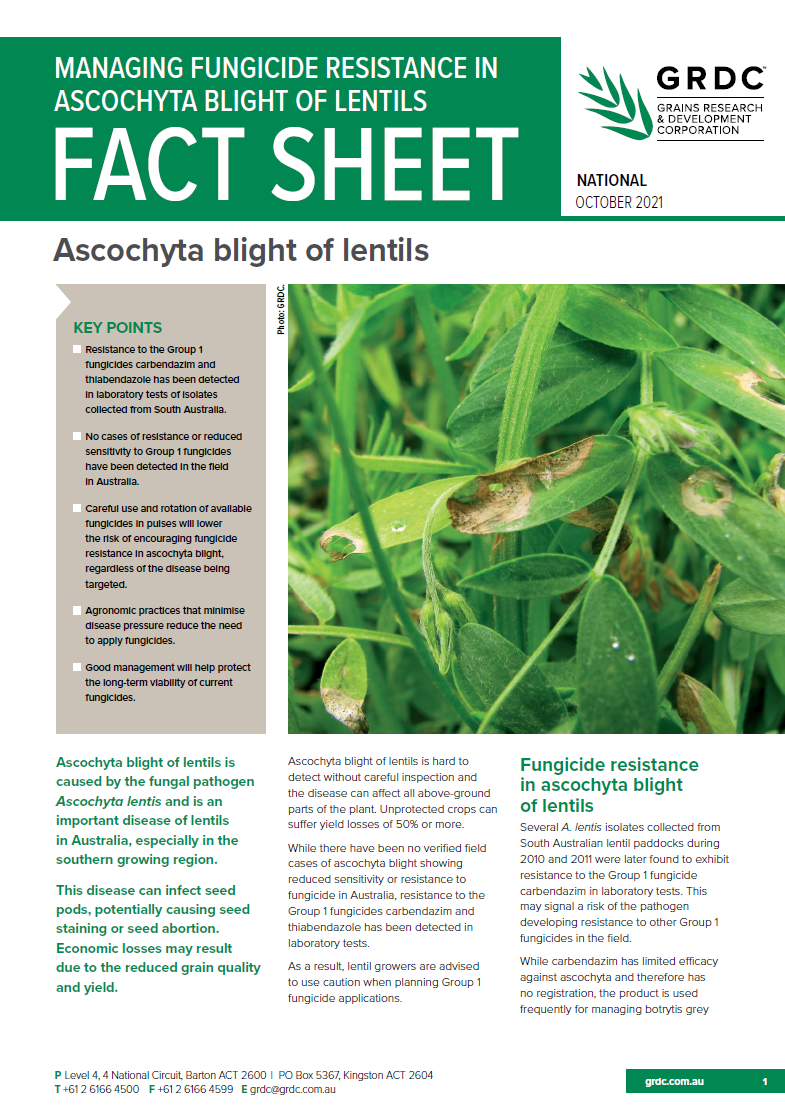Managing fungicide resistance in Ascochyta blight of lentils
Managing fungicide resistance in Ascochyta blight of lentils
Published: 27 Oct 2021
Ascochyta blight of lentils is caused by the fungal pathogen Ascochyta lentis and is an important disease of lentils in Australia, especially in the southern growing region. This disease can infect seed pods, potentially causing seed staining or seed abortion. Economic losses may result due to the reduced grain quality and yield.
Key points
- Resistance to the Group 1 fungicides carbendazim and thiabendazole has been detected in laboratory tests of isolates collected from South Australia.
- No cases of resistance or reduced sensitivity to Group 1 fungicides have been detected in the field in Australia.
- Careful use and rotation of available fungicides in pulses will lower the risk of encouraging fungicide resistance in ascochyta blight, regardless of the disease being targeted.
- Agronomic practices that minimise disease pressure reduce the need to apply fungicides.
- Good management will help protect the long-term viability of current fungicides.
Download PDF
Region: National
GRDC Project Code: CUR1905-001SAX,

